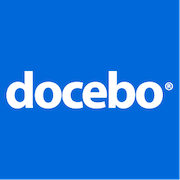Looking for the best customer success software for your business? Our comprehensive buyer's guide has got you covered! Discover top solutions, compare features, and make an informed decision for ultimate success.
Are you looking for a way to improve your customers' experience and boost your business's success? Look no further than customer success software. This powerful tool can help you manage your customer relationships and reduce churn, leading to increased customer loyalty and revenue. HubSpot Research found that 70% of companies with growing revenue view customer success as "very important." With a variety of options on the market, it can be overwhelming to choose the right one for your business. That's why we've created this buyer's guide to help you navigate the solution's advanced features, benefits, and considerations. Whether you're a small business or a large enterprise, implementing the right customer success tool can streamline your processes, optimize your customer interactions, and ultimately drive your business forward.
What is a customer success software (CSS)?
This is a powerful tool designed to help companies improve their relationships with their customers. Providing an in-depth understanding of customer behavior and feedback, the software seeks to optimize the customer experience, resulting in increased satisfaction and loyalty. It is commonly used to automate processes and deliver a better customer experience which allows companies to take a proactive approach to customer success, identifying potential issues before they become problems.
This solution is commonly used by software-as-a-service (SaaS) companies. However, it is increasingly being adopted by other industry sectors such as finance, media, education, and e-commerce.
The customer success system is also often used to supplement traditional customer service approaches, making sure that customer needs are met proactively. Improved customer relationships lead to improved business performance, as satisfied customers are more likely to refer others and renew their own subscription or purchase more products from the same company.
Here are some common use cases of this technology:
- Onboarding: Streamlining the customer onboarding process to improve customer retention rates.
- Customer engagement: Track customer engagement and provide personalized communication tailored to individual preferences.
- Feedback gathering: Collect feedback through surveys and integrate the insights gathered from feedback into the product.
- Data analysis: Analyze customer data on churn rates and engagement, to optimize products and services.
- Customer retention: Identify customers' risk scores and take actions to reduce the churn rate
What are the benefits of utilizing a customer success system?
CSS is a powerful tool that companies can utilize to improve customer satisfaction, loyalty, and retention. By providing actionable insights, it helps businesses understand their customers' needs, anticipate potential issues, and take proactive measures to resolve them. But why is it so important for businesses?
Here are its main benefits it offers:
- Increased customer retention: Businesses can proactively monitor customer activity and quickly identify at-risk customers before they churn. By intervening early and addressing issues, businesses can retain more customers and increase their lifetime value.
- Improved customer satisfaction: By understanding their customers' needs, preferences, and pain points, businesses can deliver personalized experiences that meet their expectations. By resolving issues efficiently, businesses can ensure that their customers remain satisfied.
- Streamlined customer support: It can automate and streamline routine tasks, freeing up customer support teams to focus on more complex issues. With better data and analytics, businesses can optimize their support processes and reduce response times.
- Enhanced product development: By analyzing customer data, businesses can identify common pain points and areas for improvement in their products. This can help them prioritize future development efforts and deliver products that better meet their customers' needs.
10 key features of customer success software
This solution is designed to help businesses retain customers by providing them with what they need and keeping them happy. Here are 10 of its common features that can help companies achieve their customer success goals:
1. Customer Analytics
This feature allows businesses to analyze customer behavior and preferences, which can guide decision-making processes.
2. Knowledge Management
It helps store information that is accessible to all teams in real-time, thus reducing the time it takes to find an answer to a customer's question.
3. Workflow Automation
CSS automates routine tasks such as ticket resolution, email follow-ups, and chatbot responses, freeing up time for teams to focus on complex issues.
4. Task Management
Larger organizations often have multiple teams managing different aspects of customer success. This feature helps teams maintain visibility and track progress toward meeting their goals.
5. Customer Feedback
It provides businesses with comprehensive feedback data with critical insights from customers, which can help them gauge customer satisfaction levels.
6. Customer Health Scores
It also analyzes various inputs to calculate customer health scores, which provide data about the customer's overall state of satisfaction with the business.
7. Customer Journey Mapping
It provides businesses with visibility into the customer's journey throughout the entire buying process.
8. Customer Segmentation
CSS tool segmentation customer data and information to provide businesses with the ability to personalize customer interactions, which helps build and strengthen relationships.
9. Reporting and analytics
This technology provides businesses with metrics and analysis which helps management teams optimize their operations.
10. 24/7 support
This feature ensures that customers can seek help anytime by providing businesses with the ability to address customer questions or concerns quickly.
The essential features listed above are critical components of a successful CSS product and by leveraging it, businesses can streamline their workflows, provide exceptional customer experiences, and cultivate long-term customer relationships.
6 things to consider when purchasing a customer success solution
Effective customer success is key to building strong customer relationships, and a customer success platform can provide businesses with tools to streamline their processes and ensure they can keep customers satisfied. Choosing the right one can be challenging, so we've compiled a list of important factors to consider when making a purchase:
1. Feature set
Different customer success software solutions offer varying features, and it's important to choose one that ticks all the boxes for your business. Look for features like customer data management, task automation, analytics and reporting, and communication tools. Ensure it has the ability to integrate with other tools your business uses, such as CRMs, marketing automation software, or chat tools to keep everything aligned.
2. Ease of use
If the program is overly complicated and difficult to use, your customer success team might not adopt it. Ensure to pick a software solution that has a user-friendly interface, customizable workflows, and offers a simple navigation system.
3. Scalability
Your business needs are going to change as you grow, so selecting a solution that can scale up or down is important. It's better to invest in one that can scale with your business to avoid the need for constant software changes.
4. Price
Price optimization is key when it comes to buying any software. Ensure to explore your options and balance it with feature set, customer support, and scalability. Cloud-based solutions are normally more cost-effective and don't require much initial investment in terms of hardware or maintenance as opposed to on-premise solutions.
5. Customer support
Customer support is often overlooked in the buying process, but it's a very important factor. Ensure to choose a provider that offers strong customer support. Test out the available channels, such as email, chat, or phone, to make sure you can get the assistance you need in case of any issues with the app.
6. Security and compliance
Cybersecurity should always be a consideration, more so if you store your customer data on the software. Ensure the tool is secure and works with more than basic compliance regulations.
Choosing the wrong solution can lead to low adoption rates, lesser productivity, unhappy customers, and ultimately loss of revenue. Keep in mind these 6 key factors, and also rank them according to importance to your business to make an informed purchasing decision.
Industry trends for a customer success tool
As businesses continue to grow, customer success software remains an essential tool for companies to retain customers by ensuring their needs are met. This year, there are several emerging trends that businesses should keep an eye on.
Trend #1
One of the biggest trends is the increased focus on proactive and predictive customer analytics. By leveraging machine learning algorithms and customer data analysis, companies can predict customer behavior and identify opportunities for engagement before a problem arises.
Trend #2
Another trend is the integration of customer success software with customer relationship management (CRM) systems. This allows businesses to track customer interactions and feedback in a single platform, providing a comprehensive view of customer needs and preferences.
Trend #3
Automation is also becoming more prevalent in customer success software, from automated emails to AI-powered chatbots that can handle simple customer inquiries and provide personalized recommendations. This not only saves time and resources but also ensures a consistent customer experience across all channels.
Trend #4
Finally, gamification strategies are being integrated into customer success software to increase customer engagement and motivation. Rewarding customers for taking specific actions or achieving certain milestones creates a sense of accomplishment, which can lead to increased loyalty and customer satisfaction.
These trends will continue to evolve as businesses focus on delivering a better customer experience. By embracing these trends, companies can stay ahead of the curve and remain competitive in the marketplace.
Conclusion
In summary, the adoption of this technology is pivotal for modern businesses looking to cultivate strong, lasting connections with their customers. More than 72% of firms, according to Forrester research, feel that enhancing customer success would be their top goal. By leveraging these tools, companies can automate processes, gather valuable feedback, enhance engagement, and ultimately reduce customer churn. With its widespread use across various industries, it stands as an indispensable asset in empowering businesses to deliver exceptional customer experiences and drive long-term success.









